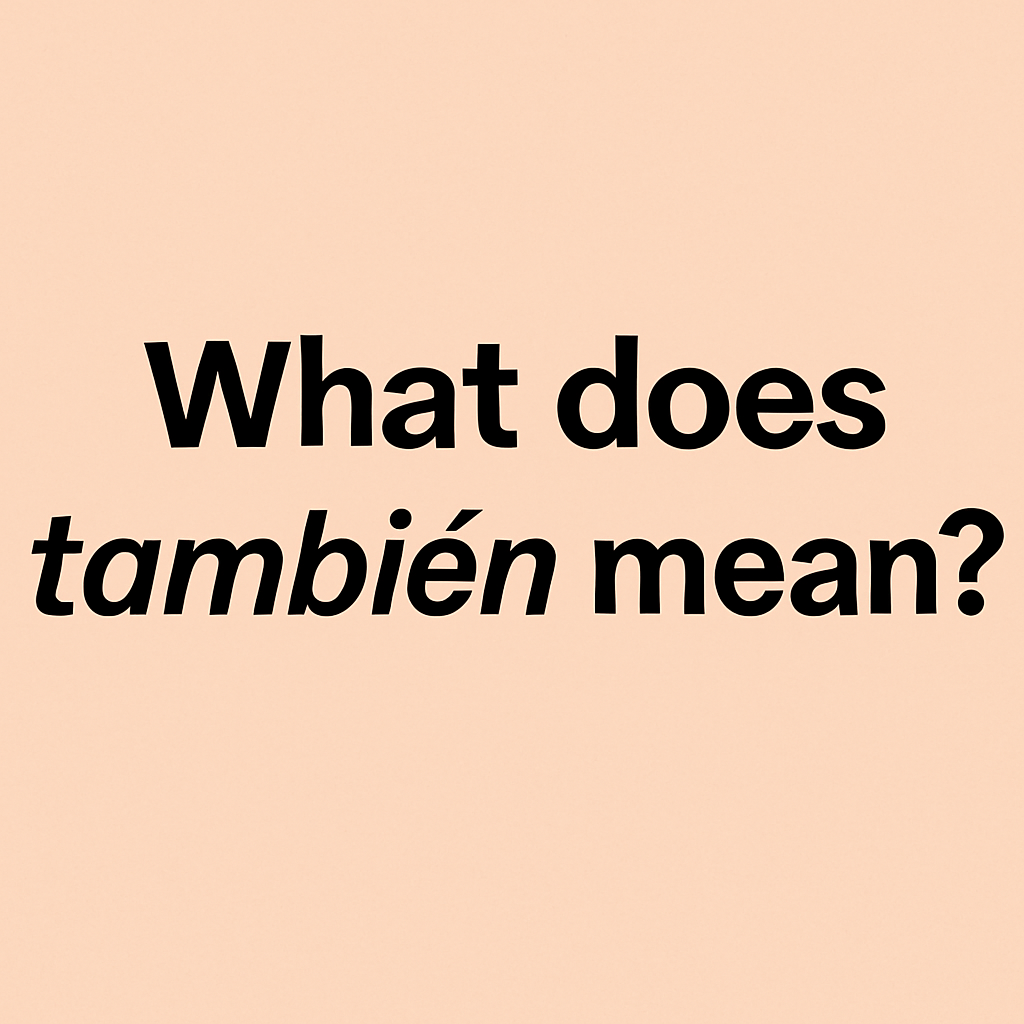The term yo También is used to translate into Spanish as me, too, so do I or same here. The term is applied to show that one agrees with something or, more broadly, that one has a sense of solidarity. The word Tambien, as we are all aware, translates to either also or too and it is used almost in the same context in which the word is used in the English language. Similarly the word Tampoco meaning neither, or either, has a similar in Spanish, as in English, with one exception. If you need more interested info like that visit quick guider.
In this post we will discuss two words as significant as the ability to say yes and no in Spanish: tampoco and también. Regardless of how much Spanish you have, it will go a long way to learn how to use tanto como and tampoco. We make use of these two as words when we intend to concur with what has already been said. That is why many Spanish learners become confused with otra vez vs tampoco. Indeed, both are adverbs. But, they are all applied in varying situations.
What does yo también mean?
The term yo also connotes in Spanish the equivalent of me, too; so do I or same here. The term is applied to show assent to a statement or more broadly, a sense of solidarity. If you need info related What does mean in a sentence.
The Spanish word “yo also” means, in English, “me too” or “I also” and is a popular phrase used to indicate agreement or support to whatever has been said. That is why when it is said by someone Yo tambien, he/she actually can say I also or Me too.
Where does yo también come from?
The word yo tambien is composed of two Spanish words. Yo is the first person pronoun of I or me and also is also or too, so ejemplo, y también will literally mean I also in English. The phrase is extremely ancient in the Spanish language, and was used in such works as the one by Miguel de Cervantes: Don Quixote, and became popular among modern audience when Romeo Santos released a song titled Yo Tambien in 2015. It also gained relevance in the #MeToo movement because it became possible to write support and agreement in Spanish as #YoTambien.
Who uses yo también?
Yo also is frequently used colloquially by Spanish speakers of all ages both in conversation and in writing, but in particular has coinage as a stock phrase of assent in Guatemala, the Dominican Republic, and Argentina. This will result in code-switching by many Spanish-language speakers who will use the frequent term in English speech and writing.
And the English-language speakers will of course be exposed to yo también very early in instruction and learning in the Spanish language. Yo también (Spanish, meaning, me too or I also) is a phrase used to show approval topositive statementor affirmation.
You Want to Learn Spanish Fast?
You’ll train Spanish with 1 of our Spanish 1 Travel-Story Course – a story about a young man who comes to Spain. You will play easy games and in the meantime you will be learning Spanish without even knowing it! You can practice using the FREE Quick Spanish Language Games or you could do it on your skills in listening or speaking using the FREE Spanish.
To master Spanish within a short time, it is good to concentrate on practicing regularly, immerse oneself in the Spanish language and make good use of the resources available in learning the language.
How to use También in Spanish
In English Tambien can be translated to mean too, also, or as well, and it is never applied in negative or negative circumstances. You use also when an individual is saying something affirmative, and you would like to show that you share his or her sentiment.
Conclusion
Finally, the term yo also is a Spanish term that is used to describe agreement or solidarity to a statement; it can be translated as me too, so do I or same here. It is based on the word yo (I) and tambien (also) and as such, it is a natural and common component conversationally in Spanishspeakingcommunities.
The phrase is applicable in a variety of contexts and has a strong literary-cultural foundation, also in contemporary movements such as the hash tag #MeToo(#YoTambien). The key to any Spanish learner who wants to communicate confidently and fluently is to understand how to use yo también and its counterpart tampoco.
FAQS
What is the meaning of “también”?
“También” means “too” or “also” in Spanish. It is used when you want to agree with a positive statement or add more information.
How to use “también” in Spanish?
Use “también” when you want to say “too” or “also” in a sentence. For example, “Me gusta la pizza también” means “I like pizza too.”
What is the meaning of “yo también”?
“Yo también” means “me too” or “I also” in Spanish. You use it to agree with someone or show that you feel the same.
What is the meaning of “bien también”?
“Bien también” means “well too” or “good too” in Spanish. It’s used when you want to say that something is also okay or goes well.
